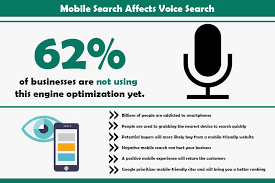
Mobile search has become increasingly prevalent in recent years, with more and more users turning to their smartphones and tablets to access information on the go. As a result, Google has placed a strong emphasis on mobile-friendly websites in its search rankings.
Mobile SEO refers to the optimization of websites for mobile devices, ensuring that they are easy to navigate, load quickly, and provide a seamless user experience. Google’s algorithms now prioritize mobile-friendly websites in their search results, giving them a competitive edge over non-optimized sites.
One key aspect of mobile SEO is responsive design, which allows websites to adapt to different screen sizes and resolutions. This ensures that users can easily access and navigate your site regardless of the device they are using. Additionally, optimizing images and content for mobile viewing can further enhance the user experience and improve your site’s rankings.
Google also considers page speed as a crucial factor in mobile rankings. Websites that load quickly on mobile devices are more likely to rank higher in search results, as slow-loading sites can frustrate users and lead to higher bounce rates. Optimizing your site’s performance through techniques such as image compression and minifying code can help improve your mobile SEO efforts.
In conclusion, prioritizing mobile SEO is essential for maintaining a strong online presence and improving your visibility on Google. By optimizing your website for mobile devices, you can attract more traffic, engage users effectively, and ultimately boost your search engine rankings.
Mobile SEO refers to the practice of optimizing websites for mobile devices to ensure a seamless user experience. It involves making websites mobile-friendly, ensuring fast loading times, and adapting content for smaller screens. Mobile SEO is crucial for Google rankings because Google prioritizes mobile-friendly websites in its search results. With the increasing number of users accessing the internet on mobile devices, having a mobile-optimized website is essential for reaching a wider audience and improving visibility on search engines like Google. By focusing on mobile SEO, businesses can enhance their online presence, attract more organic traffic, and ultimately boost their rankings on Google search results pages.
Responsive design plays a crucial role in mobile SEO on Google by ensuring that websites are optimized for various screen sizes and devices. Google prioritizes mobile-friendly websites in its search rankings, and responsive design helps achieve this by providing a seamless user experience across different platforms. Websites with responsive design are more likely to rank higher in mobile search results, as they offer improved usability and accessibility for users on smartphones and tablets. By adapting to the user’s device, responsive design enhances engagement, reduces bounce rates, and ultimately contributes to better visibility and performance in Google’s mobile search rankings.
When it comes to mobile SEO rankings, Google considers several key factors to determine a website’s mobile-friendliness and overall performance. Some of the crucial elements that Google takes into account include responsive design, which ensures that websites are optimized for various screen sizes and devices, page loading speed on mobile devices, mobile-friendly content that is easy to read and interact with on smaller screens, and the overall user experience on mobile platforms. By prioritizing these factors, website owners can improve their chances of ranking higher in Google’s mobile search results and reaching a wider audience of mobile users.
Page speed is crucial for mobile SEO on Google because it directly impacts user experience and search rankings. Google prioritizes fast-loading websites on mobile devices to ensure a seamless browsing experience for users. Slow-loading pages can lead to higher bounce rates, lower user engagement, and ultimately, a drop in search engine rankings. By optimizing page speed for mobile devices, websites can improve their performance, retain visitors, and increase their chances of ranking higher in Google search results. Prioritizing page speed not only enhances user satisfaction but also aligns with Google’s emphasis on delivering high-quality content efficiently to mobile users.
Optimizing images and content plays a crucial role in enhancing mobile SEO performance on Google. When images are properly optimized for mobile devices, they load quickly and do not slow down the page speed, which is a key factor in Google’s mobile search rankings. Additionally, well-optimized content ensures that it is easily readable and accessible on smaller screens, providing a seamless user experience. By improving the overall performance of a website on mobile devices through image and content optimization, businesses can increase their chances of ranking higher in Google search results and attracting more organic traffic from mobile users.
When it comes to improving mobile SEO specifically for Google, there are several best practices to consider. Firstly, ensuring that your website is mobile-responsive is crucial, as Google prioritizes mobile-friendly sites in its search rankings. Optimizing page speed is also essential, as faster-loading sites tend to rank higher. Additionally, optimizing images and content for mobile viewing, utilizing structured data markup, creating a seamless user experience, and focusing on local SEO strategies can all contribute to improving your site’s performance on Google’s mobile search results. By implementing these best practices, you can enhance your mobile SEO efforts and increase your visibility on Google’s search engine.